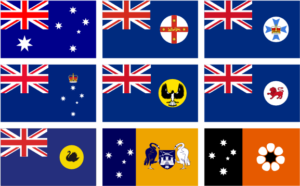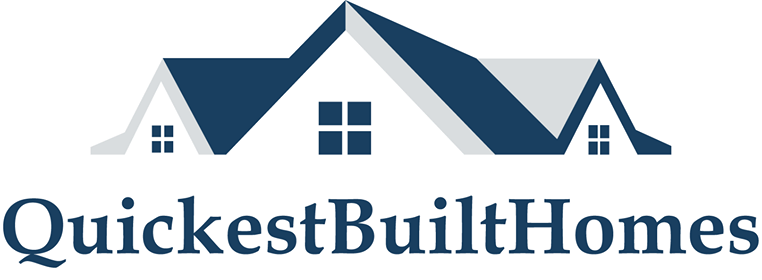A quick overview of Granny Flat or similar termed building requirement from various state body councils.

- NSW : ( 60M2 Dwelling – 450M2 Min. Land size)
- WA : (60M2 – Max. 70 M2 range for max. floor area)
- Victoria : (DPU) Dependent Person Units. (M2 Currently being done)
- QLD : (60 M2 to 80 M2 range for max. floor area)(STCA)
- SA : (DPU) Dependent Person Units. (60m2-70m2)
- ACT : (90m2 instead of usual 75m2 )
- Tasmania: The “ancillary flat” 30% of main dwelling (or 60 M2 )
NSW : ( 60M2 Dwelling – 450M2 Min. Land size)
60 M2 of living space and 12 M2 of patio or veranda space. (STCA)
General conditions:
Lot size:
- At least 450 m2, but less than 900 m2
- Building Code of Australia (BCA): All relevant
requirements within the BCA apply. Some secondary
dwellings may result in a change in building
classification under the BCA.
For example, if any part of the secondary dwelling is
built above or below the primary dwelling, the building
containing both dwellings will be classified as Class 2
under the BCA.
WA : (60M2 – Max. 70 M2 range for max. floor area)
New Changes to the rules covering granny-flats in WA now allow homeowners to rent them out to tenants other than family members. The move was designed to ease the crush on rental housing in the resource-rich state making it easier for homeowners to earn money from tenants.
The new regulations mean granny-flats can be built in all residential zones as long as there is no more than one main home and one granny-flat on the same block. The size of the granny-flat can be no more than 70 M2 – or the maximum allowed by the council if it is different.
The allowable floor space for granny-flats would increase to provide flexibility for families to invest in and rent out a granny-flat to students and seniors as a safe and affordable option. At the moment, granny-flats must be used by family members or the homeowner themselves. By scrapping this old restriction, so-called empty nesters and seniors can unlock equity in their homes and receive a regular income, or provide space for a carer to live close by in their aging years.
There is also the potential for students and young people looking for affordable accommodation to rent granny-flats. Normal planning requirements around setbacks and density will continue to apply, but this change will introduce more flexibility and introduce more rental accommodation to the real estate market in Western Australia.
Victoria : (DPU) Dependant Person Units.
Legislation in Victoria has restrictions on who lives in granny flats, commonly called (DPU) Dependant Person Units, and who are renting them out. For example, in some council areas, granny flats can only be occupied by a person who is dependent on the resident of the main dwelling – normally a family member. Once they leave it has to be removed. Some council rules state granny flats cannot be occupied or rented out privately. It is each councils responsibility to enforce these rules through the enforcement provisions of the Planning and Environment Act.
Usually, depending on which council, the occupant of the DPU has to be named at building time. A DPU has a kitchen and bathroom and usually shares its sewer and water services with the sites principle residence.
QLD : (60 M2 to 80 M2 range for max. floor area)(STCA)
In some council areas, granny flats are illegal because they do not meet zoning laws requirements for the local district. Other problems one can encounter is if a granny flat has been constructed without the required permits or they do not satisfy the building codes.
Sometimes it’s illegal to rent out a granny flat, but perfectly within local laws for a relative to occupy the residence. The laws regarding who can stay in a granny flat (based on relations) and who can’t vary on a council to council basis, so if you are considering building one, it would be in your best interests to consult with the local housing authorities before beginning planning or construction.
The total M2 allowable for a new granny flat in Queensland can vary from council to council. We strongly advise you to visit your local council and obtain it in writing what the laws are prior to planning any granny flat. The approximate M2 allowable is usually around the 60 M2 to 80 M2 range.
Granny flats are becoming ever increasingly popular in all parts of Queensland. Granny flats are commonly used for accommodation for elderly relatives of families who wish to help provide a safe, secure and convenient type of accommodation so that their elderly relative can have a bit of independence and still be in close proximity to their loved ones.
SA : (DPU) Dependant Person Units.
Granny Flats in are a relatively new phenomenon. Many Councils currently allow granny flats to be built, but on the proviso that an immediate family member lives in it, whether it’s elderly parents or teenager children. Granny flats can only be built for an immediate family member, not as an investment option.
Before leaping into the deep end planning and building a granny flat, you should inquire to whether the extra dwelling is going to be charged for annual rates and charges. Dependent Accommodation, such as granny flats and sleep outs, are considered development and as such an application must be lodged with the council to determine whether it meets the requirements of the Development Plan. Dependent accommodation (i.e. accommodation for dependent persons where the living unit is connected to the same services of the main dwelling) should be developed on the same allotment as the existing dwelling only where:
- The site is of adequate size and configuration and greater than 600 m2 in area
- The accommodation has a small floor area that does not exceed 60 M2 or 70 %of the total floor area of the existing dwelling, whichever is the lesser
- Adequate outdoor space is provided for the use of all occupants with a minimum of 100 M2 to be shared by both residences
- Adequate on-site car parking, with an additional car parking space provided on the site, which can be used exclusively by the occupant(s) of the dependent accommodation
- The building is designed to and comprises colours and materials that will, complement the original dwelling
- The building is attached to the associated main dwelling.
ACT : (90m2 instead of usual 75m2 )
Changes have been made to the ACT’s planning laws which will allow Canberrans to build bigger granny flats on their properties.
The secondary residences known as granny flats can now be up to 90 square metres, instead of the usual 75 square metres.
The smaller dwellings are sometimes constructed close to a family home to accommodate elderly relations who want to retain their independence.
The changes also remove the requirement that residents of granny flats need to be related to the occupants of the main house.
Canberra families can help their parents or students to live independently in a residence that is large enough to be comfortable yet small enough to be manageable.
The additional size will also help builders meet the adaptable housing standards for a variety of dwelling layouts, including two-bedroom dwellings.
Tasmania: The “ancillary flat” 30% of main dwelling (or 60 M2 )

The Granny Flat rules and regulations in Tasmania prove more difficult to track down than any other state, there is no statewide policy on what you can and can’t do so the rules will vary from council to council.
The above guidelines are based on the Hobart City Council planning scheme for what they refer to as an ‘ancillary flat’. There are no obvious rules around a minimum block size, but similar to most of the other states, you are allowed only one main residence and one ancillary flat per block.
In regards to size, this isn’t a set square meterage but done as a percentage of the floor area of the main home. So if the main residence is 200 square meters, the ancillary flat is limited to 30% of this (or 60 square meters) Granny Flats Tasmania wide are becoming more popular as in all the other states, and will see a rise in popularity in the coming years.

